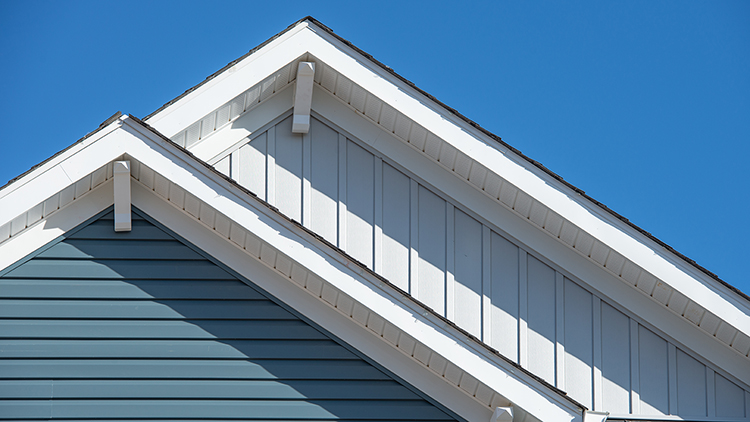When it comes to renovating or building a home, choosing the right type of siding is crucial; not only does it play a major role in the aesthetic appeal of your house, but it also provides essential protection from the elements and adverse weather. But with so many options available - from vinyl to wood, to stucco and metal - it can be overwhelming to find the best material for your property.
To help you through the decision, we’ve put together an ultimate guide covering everything you need to know about the most common types of siding, as well as some key concerns to think about when considering siding your home. Let’s take a look!
Common Types of Siding
Vinyl Siding
Vinyl siding is one of the most popular choices among homeowners due to its durability, affordability, and low maintenance. Made from PVC plastic, vinyl isn’t vulnerable to rot or rust, and is incredibly easy to maintain as it doesn’t require painting. Vinyl is also great for those looking for diverse style choices; you can find vinyl in a variation range of colors and aesthetics, plus it can be insulated, enhancing your home's energy efficiency. On the downside, vinyl siding can crack under extreme weather conditions, and may also fade over time due to sun exposure.
Wood Siding
When it comes to classic choices, wood siding offers a timeless aesthetic that remains ever-popular with US homeowners, and like vinyl, wood is available in various styles to flatter and enhance the exterior of your home. The downside of wood siding is that it does demand more maintenance than other materials; regular painting or staining is necessary to prevent damage from moisture and insects, and it can decay easily in areas with high humidity and moisture levels. However, if you want to use wood for your siding without the durability concerns, cedar and redwood are ideal, thanks to their natural resistance to decay.
Fiber Cement Siding
Another popular option for siding is fiber cement, which is a robust and versatile material composed of cement, sand, and cellulose fibers. Fiber cement effectively mimics the look of natural wood siding but requires significantly less maintenance; it’s also fire-resistant, termite-proof, and can withstand harsh weather conditions. Though it's heavier and more expensive than some other siding types, its durability does make it a lucrative, long-term investment.
Metal Siding
Metal siding, typically made from aluminum or steel, is known for its strength and longevity, as well as being also highly resistant to fire, rot, and pests. Aluminum siding tends to be relatively lightweight, is rust-proof, and its composition makes it ideal for coastal areas. Conversely, steel siding is heavier and better suited for harsh climates.
Brick and Stone Siding
For those who love a rustic appearance, brick and stone are two popular siding materials that offer exceptional durability and minimal maintenance. While brick and stone tends to be more expensive upfront, their longevity and low upkeep costs make them a cost-effective choice in the long run.
Stucco Siding
Less common but popular nonetheless, stucco is a plaster-like material applied in layers over a lath base, creating a textured, durable exterior, and is commonly found in Mediterranean, Spanish, and Southwestern style homes. When it comes to durability, stucco isn’t particularly moisture-resistant, so if you live in an area of the US with substantial humidity, it might not be the best option. However, stucco can provide effective insulation, and does have a long lifespan when properly maintained.
How to Choose the Right Siding for Your Home
So, how to choose the right type of siding for your property? While your own personal preference does come first, factors like your local climate, frequency of maintenance and budget should all be considered alongside aesthetic concerns; this will ensure easy installation, optimal function and that all-important durability. Here’s what we’d recommend thinking about before making a choice:
Climate
If you live in a harsher climate, it's essential to choose a material that can withstand extreme temperatures, moisture, and wind. Vinyl and metal are highly durable and best suited to more unpredictable climates, while wood - which is more prone to rot and decay - isn’t as suitable.
Maintenance
If you’re no fan of DIY and home maintenance, you’ll ideally want to opt for a type of siding that requires the least upkeep possible; in short, this means you’ll probably want to stay away from wood and instead opt for materials like vinyl, metal, and fiber cement.
Costs
As with any home renovation, you’ll also want to consider your personal budget. Siding your home can range in total cost from $10,000 – $32,500 on average, with materials like brick, stone, stucco and steel being some of the most expensive options. Don’t forget that you’ll need to factor in not just the cost of the materials but labor costs and additional expenses (if you’re opting for a professional installation, which we’d highly recommend).
Style
Finally, your chosen siding should naturally complement the architectural style of your home while also reflecting your personal taste. For more rustic or traditional aesthetics, wood and brick are both ideal options, although don’t forget that both vinyl and fiber cement can be adapted to suit a host of different visual aesthetics and styles.
